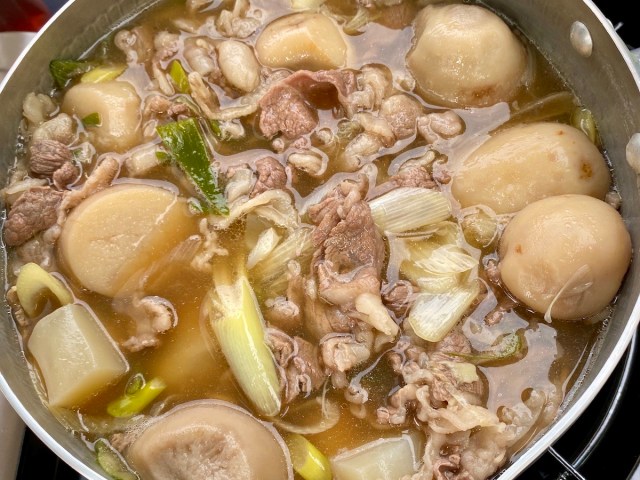
Celebrating the arrival of autumn with a piping-hot bowl of delicious stew!
If you’ve ever visited the Tohoku region in northern Japan, you may have heard of the tradition of Imoni-kai. An autumnal answer to hanami, the spring-time picnics that people enjoy under cherry blossoms, Imoni-kai is a tradition where friends and families gather together on a riverbank to cook imoni, a taro-root stew.
In fact, it’s such an important cultural event that in Yamagata Prefecture, there’s the annual Number One Imoni-kai in Japan event, in which imoni is cooked in a giant six-meter iron pot and the ingredients are added using construction vehicles (no, seriously).
Naturally, the event draws massive crowds from all over, because who doesn’t want to see a crane stirring meat and veggies in a giant pot? Sadly, this meant that due to the current climate, some alterations had to be made: this year, the organisers decided to make the event a drive-thru version. No more crowds swarming to get a piece of that taro-root action; this year, visitors had to enjoy imoni from the comfort of their car.
We sent Japanese reporter Saya to see how the event would turn out.
Anyone who wished to sample this year’s imoni would need to make a reservation in advance. The ticket cost 2,000 yen (US$19) and served as a voucher, good for four servings of imoni. The event was very carefully cordoned out, with only cars being allowed to enter. Visitors were required to stay in their vehicles at all times, and anyone entering on foot was not allowed.
But what about the giant iron pot and the crane? Would they be making an appearance this year as usual?
Nope. This year, the giant 6 meter pot was replaced with something a little smaller. Previous events have dished up over 30,000 helpings of imoni to visitors to enjoy, but this year’s scaled down version could offer only 4,000 helpings in 1,000 sets.
But it wasn’t all doom and gloom! Japan being Japan, no festival is complete without its own mascots, and Imoni-kai mascots Imoni-man and Satomi were there to lift everyone’s spirits. They were also there to remind them of proper etiquette as they donned their own masks and kept a reasonable distance apart.
After waiting patiently in the car, it was finally Saya’s turn to receive her imoni set. The set was given to her through the window and the whole transaction took a mere number of seconds. In fact, the whole process was so smooth that even fast food restaurants should take notice!
▼ The imoni came in a air-tight sealed container.
▼ The set also came with a tote bag, magnets and handkerchiefs, as well as utensils such as chopsticks and bowls.
As getting out of the car at the venue wasn’t allowed, once Saya had received her imoni all that was left to do was go and eat it. In keeping with the outdoors-y tradition of imoni-kai, Saya took her stew to a campsite and reheated it.
The seasonings and vegetables in imoni vary depending on the region. For example, Yamagata imoni has a soy sauce base to the soup, whereas neighbouring prefecture Miyagi uses miso paste. Even within Yamagata Prefecture itself there are different regional variants, and the imoni that Saya was enjoying today was the Murayama version: a beef stew with a sweet and salty broth. Yum!
You may be questioning the use of the word “festival” at this point. After all, it’s not like Saya even got to leave her car and walk around! How is this a festival?
Well, in Saya’s opinion, imoni-kai is not just an event where people go and eat taro-root soup. Sure, that’s certainly a delicious part of it, but at the heart of it all, it’s an event where friends and families gather together to appreciate the turning of the season. As the days start to get colder, what better way to get through them with a piping hot bowl of soup?
It’s an event to celebrate the arrival of autumn. While being served soup made with a large construction vehicle is certainly awesome, you can still celebrate the changing of the seasons without it.
▼ Plus, you get to enjoy taro-root the size of a child’s fist!
So in the end, while Saya didn’t get to see a giant crane scooping up piping hot bowls of stew this year, she appreciated the hard work and thoughtfulness from the organisers. Especially considering this year many other festivals had to be cancelled, the fact that the Imoni-kai could happen at all was much appreciated. The whole event ran very smoothly and Saya could enjoy the arrival of autumn with some imoni.
Fingers crossed that everything is back to normal for next year’s food festivals across the country, although there are some we probably wouldn’t mind skipping out on....
Photos: ©SoraNews24
● Want to hear about SoraNews24’s latest articles as soon as they’re published? Follow us on Facebook and Twitter!
[ Read in Japanese ]

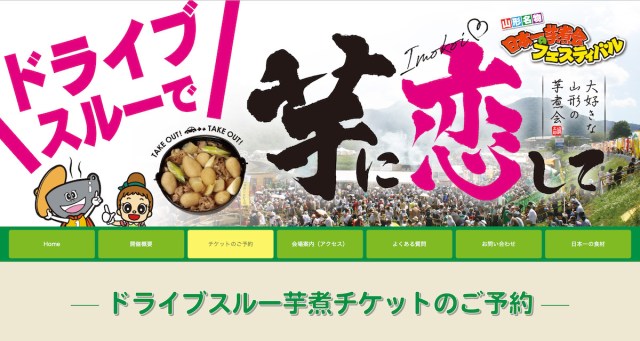
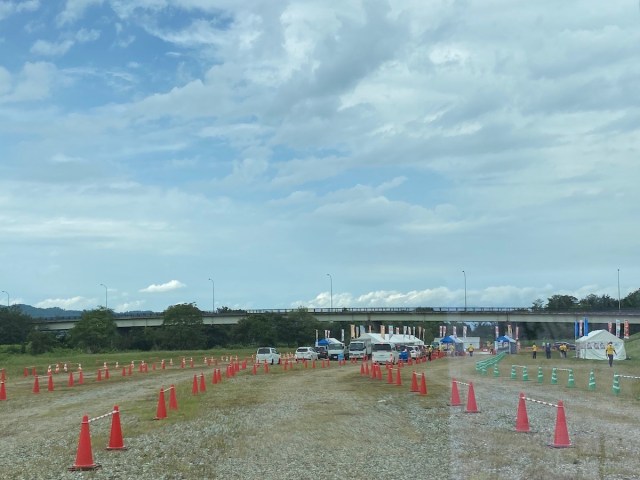
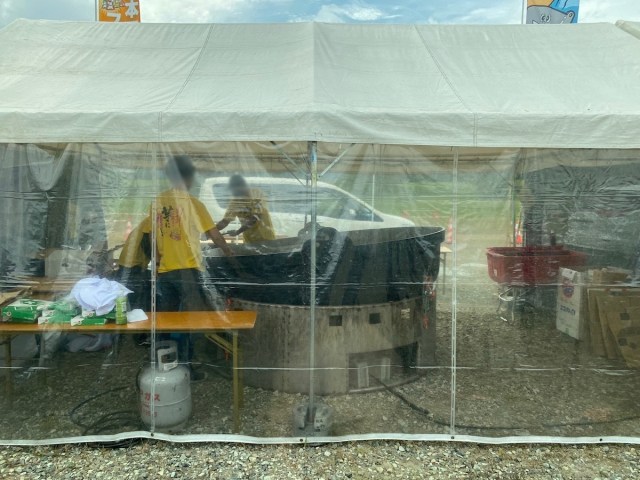
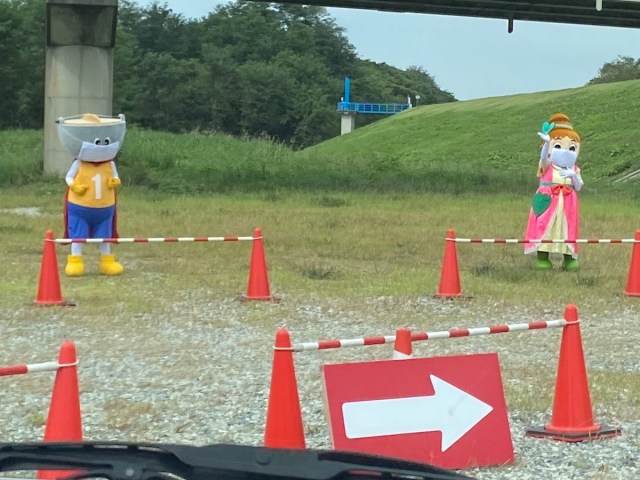
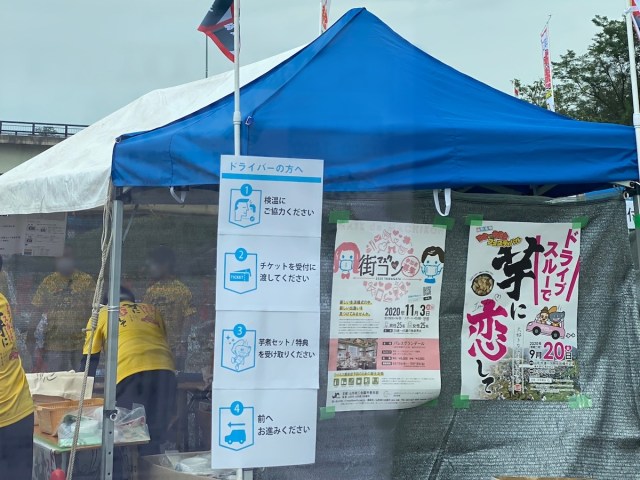
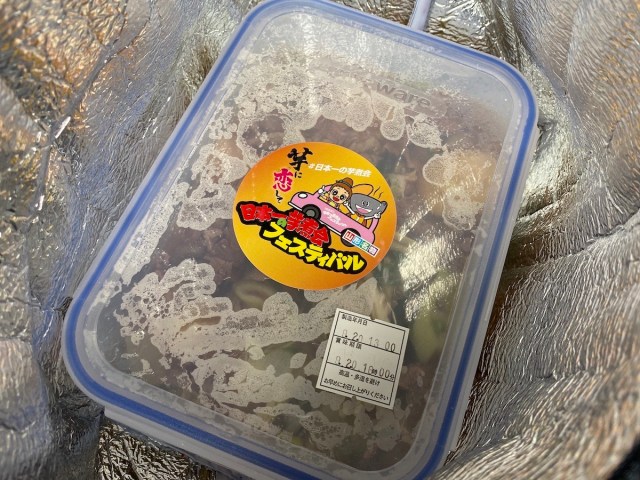
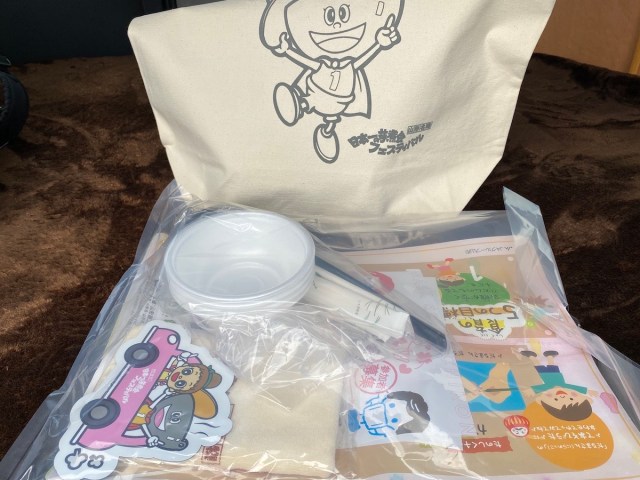
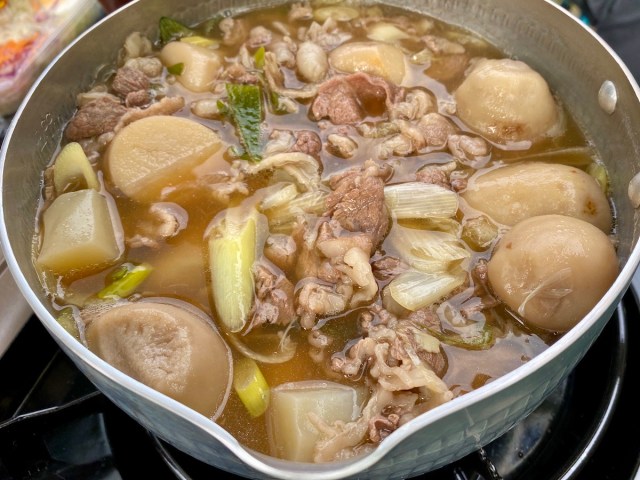
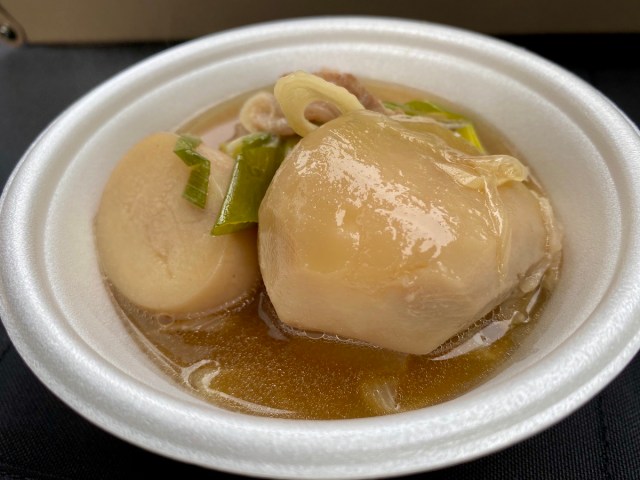
 Imoni-kai: A hidden, delicious cultural gem of northern Japan
Imoni-kai: A hidden, delicious cultural gem of northern Japan We try making imoni, the beloved taro and beef stew of northern Japan【SoraKitchen】
We try making imoni, the beloved taro and beef stew of northern Japan【SoraKitchen】 Is there any point to holding your chopsticks the “correct” way? Let’s find out【Experiment】
Is there any point to holding your chopsticks the “correct” way? Let’s find out【Experiment】 In the search for the perfect crunchy cream puff, we try Beard Papa’s new cookie-topped choux
In the search for the perfect crunchy cream puff, we try Beard Papa’s new cookie-topped choux ‘Butter mochi’ flavoured chocolate may be the best kind of Tirol we’ve ever tasted
‘Butter mochi’ flavoured chocolate may be the best kind of Tirol we’ve ever tasted Red light district sushi restaurant in Tokyo shows us just how wrong we were about it
Red light district sushi restaurant in Tokyo shows us just how wrong we were about it Sandwiches fit for a sumo served up in Osaka【Taste Test】
Sandwiches fit for a sumo served up in Osaka【Taste Test】 McDonald’s new Happy Meals offer up cute and practical Sanrio lifestyle goods
McDonald’s new Happy Meals offer up cute and practical Sanrio lifestyle goods Beautiful Red and Blue Star luxury trains set to be Japan’s new Hokkaido travel stars
Beautiful Red and Blue Star luxury trains set to be Japan’s new Hokkaido travel stars Japan’s massive matcha parfait weighs 6 kilos, contains hidden surprises for anyone who eats it
Japan’s massive matcha parfait weighs 6 kilos, contains hidden surprises for anyone who eats it Pokémon Sleep camping suite and guestrooms coming to Tokyo Hyatt along with giant Snorlax burgers
Pokémon Sleep camping suite and guestrooms coming to Tokyo Hyatt along with giant Snorlax burgers Japanese ramen restaurants under pressure from new yen banknotes
Japanese ramen restaurants under pressure from new yen banknotes Limited-edition Carbonara Udon will anger noodle purists and pasta lovers 【Taste test】
Limited-edition Carbonara Udon will anger noodle purists and pasta lovers 【Taste test】 Haku is…Chihiro’s dead brother? Studio Ghibli fans blown away by Spirited Away theory
Haku is…Chihiro’s dead brother? Studio Ghibli fans blown away by Spirited Away theory 7-Eleven opens “next generation” SIP convenience store in Japan
7-Eleven opens “next generation” SIP convenience store in Japan All-you-can-drink Starbucks and amazing views part of Tokyo’s new 170 meter-high sky lounge
All-you-can-drink Starbucks and amazing views part of Tokyo’s new 170 meter-high sky lounge More foreign tourists than ever before in history visited Japan last month
More foreign tourists than ever before in history visited Japan last month French Fries Bread in Tokyo’s Shibuya becomes a hit on social media
French Fries Bread in Tokyo’s Shibuya becomes a hit on social media Studio Ghibli releases new action figures featuring Nausicaä of the Valley of the Wind characters
Studio Ghibli releases new action figures featuring Nausicaä of the Valley of the Wind characters New private rooms on Tokaido Shinkansen change the way we travel from Tokyo to Kyoto
New private rooms on Tokaido Shinkansen change the way we travel from Tokyo to Kyoto Starbucks reopens at Shibuya Scramble Crossing with new look and design concept
Starbucks reopens at Shibuya Scramble Crossing with new look and design concept Studio Ghibli glasses cases let anime characters keep an eye on your spectacles
Studio Ghibli glasses cases let anime characters keep an eye on your spectacles Beautiful Ghibli sealing wax kits let you create accessories and elegant letter decorations【Pics】
Beautiful Ghibli sealing wax kits let you create accessories and elegant letter decorations【Pics】 Studio Ghibli releases Kiki’s Delivery Service chocolate cake pouches in Japan
Studio Ghibli releases Kiki’s Delivery Service chocolate cake pouches in Japan New definition of “Japanese whiskey” goes into effect to prevent fakes from fooling overseas buyers
New definition of “Japanese whiskey” goes into effect to prevent fakes from fooling overseas buyers Our Japanese reporter visits Costco in the U.S., finds super American and very Japanese things
Our Japanese reporter visits Costco in the U.S., finds super American and very Japanese things Studio Ghibli unveils Mother’s Day gift set that captures the love in My Neighbour Totoro
Studio Ghibli unveils Mother’s Day gift set that captures the love in My Neighbour Totoro New Japanese KitKat flavour stars Sanrio characters, including Hello Kitty
New Japanese KitKat flavour stars Sanrio characters, including Hello Kitty New Pokémon cakes let you eat your way through Pikachu and all the Eevee evolutions
New Pokémon cakes let you eat your way through Pikachu and all the Eevee evolutions Disney princesses get official manga makeovers for Manga Princess Cafe opening in Tokyo
Disney princesses get official manga makeovers for Manga Princess Cafe opening in Tokyo Sales of Japan’s most convenient train ticket/shopping payment cards suspended indefinitely
Sales of Japan’s most convenient train ticket/shopping payment cards suspended indefinitely Sold-out Studio Ghibli desktop humidifiers are back so Totoro can help you through the dry season
Sold-out Studio Ghibli desktop humidifiers are back so Totoro can help you through the dry season Japanese government to make first change to romanization spelling rules since the 1950s
Japanese government to make first change to romanization spelling rules since the 1950s Ghibli founders Toshio Suzuki and Hayao Miyazaki contribute to Japanese whisky Totoro label design
Ghibli founders Toshio Suzuki and Hayao Miyazaki contribute to Japanese whisky Totoro label design Doraemon found buried at sea as scene from 1993 anime becomes real life【Photos】
Doraemon found buried at sea as scene from 1993 anime becomes real life【Photos】 Tokyo’s most famous Starbucks is closed
Tokyo’s most famous Starbucks is closed One Piece characters’ nationalities revealed, but fans have mixed opinions
One Piece characters’ nationalities revealed, but fans have mixed opinions We asked a Uniqlo employee what four things we should buy and their suggestions didn’t disappoint
We asked a Uniqlo employee what four things we should buy and their suggestions didn’t disappoint Princesses, fruits, and blacksmiths: Study reveals the 30 most unusual family names in Japan
Princesses, fruits, and blacksmiths: Study reveals the 30 most unusual family names in Japan We tried cooking with a personal fryer and now we’re obsessed
We tried cooking with a personal fryer and now we’re obsessed Taste-testing 3 fast food chains’ autumn chocolate pies in Japan to find the ultimate pie
Taste-testing 3 fast food chains’ autumn chocolate pies in Japan to find the ultimate pie How to make Ukrainian flag origami crane paper
How to make Ukrainian flag origami crane paper Shiraishi Island needs YOUR character ideas!
Shiraishi Island needs YOUR character ideas! Our matcha skeptic finds green tea dessert for people who don’t like green tea sweets【Taste test】
Our matcha skeptic finds green tea dessert for people who don’t like green tea sweets【Taste test】 Resident Evil Umbrella green, red herb bath salts now exist in real world, are terrifying【Pics】
Resident Evil Umbrella green, red herb bath salts now exist in real world, are terrifying【Pics】 Japan’s hyper-realistic CG schoolgirl moves for the first time in new video【Video】
Japan’s hyper-realistic CG schoolgirl moves for the first time in new video【Video】 We tried making natto the old-fashioned way, and the result was unexpected but delicious 【SoraKitchen】
We tried making natto the old-fashioned way, and the result was unexpected but delicious 【SoraKitchen】 This USB device exists solely to warm up rice balls, and honestly, it does a great job
This USB device exists solely to warm up rice balls, and honestly, it does a great job We got our hands on the new and rare 1/12th scale model of a Japanese post box
We got our hands on the new and rare 1/12th scale model of a Japanese post box We spice up our fermented soybeans with curry powder flavored natto【Taste Test】
We spice up our fermented soybeans with curry powder flavored natto【Taste Test】 Can even our brown thumbs keep this “moss bonsai” kit alive?【Photos】
Can even our brown thumbs keep this “moss bonsai” kit alive?【Photos】 Temple camping in Japan at Wakayama’s Daitaiji【Photos】
Temple camping in Japan at Wakayama’s Daitaiji【Photos】 We make anime food from Studio Ghibli movie Laputa: Castle in the Sky
We make anime food from Studio Ghibli movie Laputa: Castle in the Sky Traditional Japanese cuisine gets an out of this world treatment — we try Japanese Space Food
Traditional Japanese cuisine gets an out of this world treatment — we try Japanese Space Food There’s no reason not to play with your food with this natto in Nanoblock form
There’s no reason not to play with your food with this natto in Nanoblock form
Leave a Reply